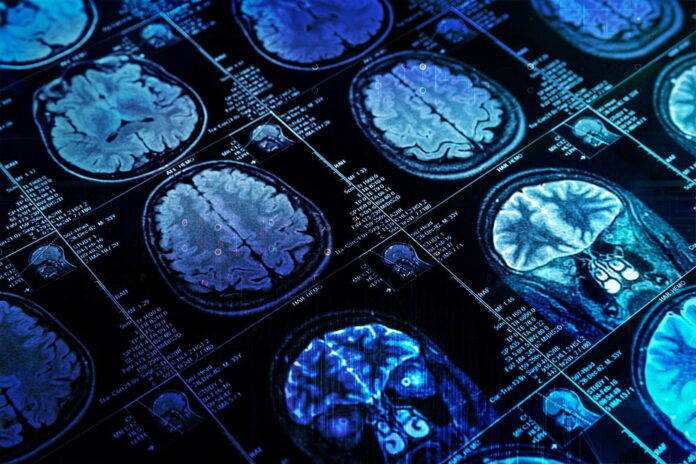The significance of high-quality medical images in today’s rapidly developing medical technology cannot be overstated. When it comes to medical diagnoses and treatments, having access to high-quality images can make all the difference in the world.
This article will explore the importance of high-quality medical imaging, particularly magnetic resonance imaging (MRI), and the factors that contribute to it.
Better image quality is another positive side effect of technological progress, which will be discussed along with its implications for both patients and doctors.
The Role of Image Quality in Diagnostic Accuracy
To aid in diagnosing and treating medical conditions, medical imaging aims to provide a clear and accurate representation of a patient’s internal structures. The image quality directly impacts diagnostic accuracy, making it an essential factor in accomplishing this goal. Take into account the following:
– Clearer Images Enable Precise Diagnoses: High-quality images allow for the detection of even the most subtle abnormalities, improving the likelihood of a precise diagnosis. The improved image quality of a service like those provided by Express MRI, for instance, can show minute changes in tissue that might otherwise go undetected in the early stages of a disease or injury.
– Reducing Misdiagnoses: Avoidable treatments, invasive procedures, and delays in care can result from incorrect diagnoses, so improving image quality is a top priority. By maintaining the best image quality possible, doctors can make more accurate diagnoses with less chance of error.
– Improved Patient Outcomes: Accurate and timely diagnoses can improve patients’ quality of care. A significant contribution to these successes is made by high-quality ingleburn medical imaging.
Advancements in Medical Imaging Technology
The quality of medical images has vastly improved thanks to medical imaging technology’s constant development. These developments have allowed for the capture of clearer, more detailed images, facilitating more precise diagnoses and, consequently, better patient care. Among the most significant developments are the following:
– Due to advancements in imaging technology, we can now see finer details and detect anomalies that would have gone undetected in the past.
– Image processing enhancements have improved contrast, making distinguishing between healthy and diseased tissue easier, and cutting down on background noise. This improves image quality, allowing for more precise depictions of an organ’s structure.
– Newer, more efficient imaging methods have made it possible to acquire high-quality images in a fraction of the time.
– Patients with trouble sitting still for long periods, like young children or those with claustrophobia, will benefit greatly.
The Patient’s Perspective
Patients also benefit from high-quality medical imaging. A patient’s trust in their healthcare provider’s diagnosis and treatment decisions is bolstered when they know their provider has access to the clearest, most accurate images possible.
For some people, getting an X-ray or other medical imaging done is a traumatic experience. Some of this worry can be alleviated by knowing that the images obtained are of the highest quality, decreasing the likelihood of requiring further scans or procedures. The time it takes to process and analyze high-quality images decreases, which speeds up the diagnostic and treatment processes.
Conclusion
In conclusion, it is impossible to overstate the significance of high-quality images in medical imaging. Improved patient outcomes are a direct result of higher diagnostic confidence, lower rates of incorrect diagnosis, and higher image quality. Keeping abreast of the most recent imaging methods is essential for doctors to provide their patients with the best care as medical technology evolves.
Read Also
- How to Drive Growth Through Customer Centricity in HealthcareThe world of healthcare is changing in big ways. Consumers are now stepping up and taking charge of their health journeys. This change is happening now for important reasons. The U.S. health and wellness market is huge, projected to be over $6 trillion in 2025. This growth is fueled by rising out-of-pocket costs and more… Read more: How to Drive Growth Through Customer Centricity in Healthcare
- Maximizing Digital Reach for Podiatry Clinics in Local HealthcareMaximizing Digital Reach for Podiatry Clinics in Local Healthcare As the healthcare industry evolves, mobile marketing becomes indispensable for practitioners. Podiatry clinics, focusing on foot and ankle care, must adapt to digital strategies to engage patients effectively. Implementing tailored SEO practices is crucial for these clinics to thrive in an increasingly competitive market. Digital marketing… Read more: Maximizing Digital Reach for Podiatry Clinics in Local Healthcare
- Leveraging Virtual Medical Assistants to Maximize Operational Efficiency in HealthcareIn the increasingly complex and fast-paced world of healthcare, operational efficiency is critical. Doctors and healthcare administrators are faced with numerous challenges, from managing patient scheduling and medical billing to adhering to stringent regulatory compliance and insurance claims processing. These tasks, while essential, often divert time and resources away from the core mission of providing… Read more: Leveraging Virtual Medical Assistants to Maximize Operational Efficiency in Healthcare
- Optimizing CT Protocols: The Hidden Key to Efficiency and Cost Savings in RadiologyIntroduction: Why CT Protocol Optimization Matters Computed Tomography (CT) is a cornerstone of modern diagnostic imaging, providing critical information across nearly every medical specialty. However, maximizing the value of CT — both clinically and financially — requires more than just advanced hardware. The real secret lies in the optimization of CT protocols. When CT protocols… Read more: Optimizing CT Protocols: The Hidden Key to Efficiency and Cost Savings in Radiology
- Hospital Discharge Accuracy Improves With Daily Advisor InvolvementThe hospital discharge process has a big effect on patient recovery, hospital efficiency, and finances. It requires careful planning and clear communication between team members to make sure patients get the right care when they leave the hospital. Having physician advisors involved at this stage can improve the discharge process by spotting problems that need… Read more: Hospital Discharge Accuracy Improves With Daily Advisor Involvement
- Understanding Clinical Trials: What to Learn and the RoadblocksClinical trials are research studies conducted to determine the efficacy of medical, surgical or behavioral interventions. They are the most commonly used way that researchers assess whether new treatments, drugs or medical devices are safe and effective for use in humans. There are strict protocols governing these studies, and all of this is done in such a… Read more: Understanding Clinical Trials: What to Learn and the Roadblocks







